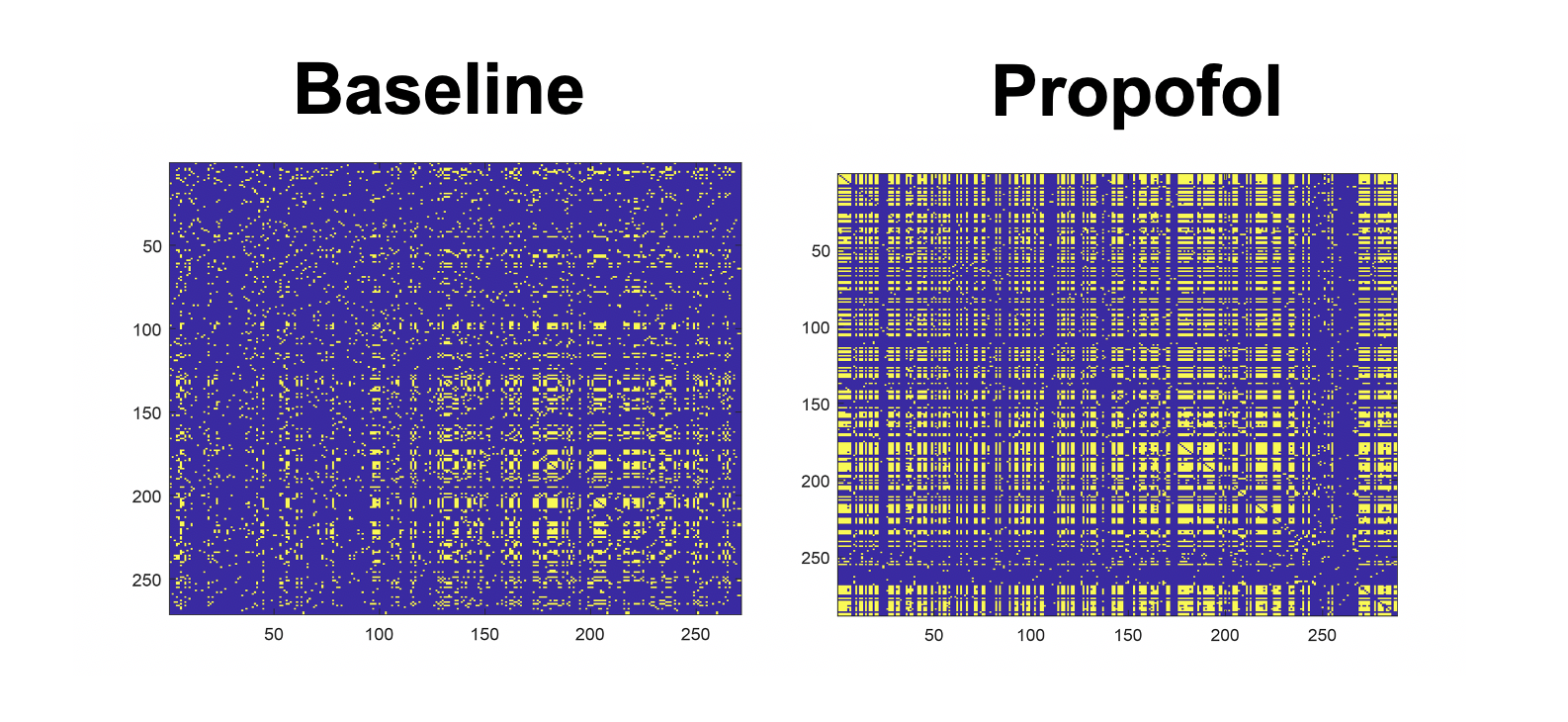Mechanisms of general anaesthesia
Most of us will undergo a procedure requiring general anaesthesia at least once in our lives, yet it remains unknown how these diverse drugs work.
Objective/mission (the vision)
We have discovered a new target mechanism for common general anaesthetics such as propofol and isoflurane, centred on the presynaptic release machinery. Our view is that general anaesthesia encompasses multiple distinct target processes, starting with loss of consciousness as a post-synaptic receptor-driven mechanism, whereas anaesthesia maintenance and recovery involve presynaptic release processes. By understanding these separate processes, we will be able to better control the loss of responsiveness and loss of consciousness required for many surgical procedures.
Research approach (the initiative)
Because general anaesthesia is a complex problem that starts with molecules and ends with a brain going offline, we employ a variety of tools and approaches in order to draw links among different levels of understanding the problem. We use super-resolution microscopy to track the effect of these drugs on individual protein dynamics; we use electrophysiology to measure effects on neuronal excitability and synaptic release; we use optogenetics and whole-brain imaging to understand how local effects at synapses translate to global changes across the brain; and we use behavioural readouts in flies to understand effects at the organismal level. It is only by connecting all of these different effects and readouts that we will be able to really understand how these extremely diverse drugs disassemble our consciousness.
Impacts and applications
Over 300 million surgeries are performed under general anaesthesia annually worldwide. Although mostly safe, there is little understanding of why some procedures fail or why recovery from general anaesthesia is often problematic in certain patient populations, such as the elderly. Our discovery of a presynaptic mechanism provides a potential explanation for these misunderstood aspects of general anaesthesia. By understanding both the pre- and postsynaptic components of general anaesthesia, it should be possible to ‘dial’ these mechanisms separately with tailored drugs, rather than using less precise drugs that have undesirable side-effects. More broadly, by understanding how general anaesthetics abolish consciousness we will gain more insight on what exactly is required to be conscious.
Partners/collaborators
-
Dr Victor Anggono (QBI)
Collaborator on an NHMRC grant (2016-2018) to study presynaptic mechanisms influencing recovery from general anaesthesia. Ongoing collaborations on this project, as an Associate Investigator on another NHMRC grant (2019-2022) investigating presynaptic mechanisms of general anaesthesia.
-
Dr Zhitao Hu (QBI)
Co-supervisor for a PhD project focussing on presynaptic mechanism of general anaesthesia in Caenorhabditis elegans.
-
Dr Zhaoyu Li (QBI)
Collaborator for neural imaging techniques for general anaeshesia in Caenorhabditis elegans.
-
Professor Fred Meunier (QBI)
Collaborator for developing single-molecule tracking techniques in Drosophila melanogaster. Ongoing collaborations on this project, as an Associate Investigator on another NHMRC grant (2019-2022) investigating presynaptic mechanisms of general anaesthesia.





